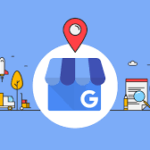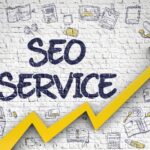Zendesk has had an incredible run over the last 15 years:
- 2010: Grew 300% and passed 5,000 companies.
- 2013: Reached 25,000 customers.
- 2018: Surpassed $500 million in annual recurring revenue (ARR).
- 2021: Reached $1.3 billion in revenue.
How did they achieve such huge and steady growth in that time, on their path beyond $1 billion?
They did a lot of things right, but we honed in on a few things they have nailed when it comes to marketing, and highlighted 7 of their biggest growth levers that you can learn from:
1. An Intimate Understanding of Their Customer
2. Creative, Emotional, Human Marketing
3. Price Optimization and Product Expansion
4. Using a User Community to Build Social Proof (and Surface Case Studies)
5. One of the Best Industry Trends Reports on the Market
6. Free Benchmark Surveys that Identify Problems and Highlight Solutions
7. A World Class Demo Self-Guided Product Tour
Let’s dive in.
An Intimate Understanding of Their Customer
One look at Zendesk’s website, any of their social channels, email, blog etc… and it will be abundantly clear that they understand their target audience.
They get customer service representatives.
For a role that often doesn’t get their flowers, Zendesk’s deep understanding of their problems and goals sets them up to create real, meaningful connections with their customers and audience.
Just check out this reel.
You can’t pull off that kind of content unless you really get your audience. They’re in on the joke. And their tone is always spot-on.
Their content is funny, pithy, even sarcastic. Kind of a risk when you target enterprise level businesses, but it pays off for them because it’s authentic and genuine.
How to (Really) Understand Your Customers
If you’ve spent any time in marketing you know this is a no-brainer. You’ve got to know your audience, create buyer personas, ICPs, etc… But if you really want to stand out in a crowded marketplace, you’ve got to take this to the next level. You need to know your audience better than they know themselves.
- Interview Them: We talk about this in a lot of our content – but it’s because we think it’s so important. You can assume you know your audience all you want, but until you actually ask them the hard hitting questions, you can’t be sure.
- Go to Them: It’s one thing to hop on a call or have them drop by your office, but getting to know your customers in their environment goes a long way. Ask if you can come to their office for lunch. If you have a good relationship, ask if you can work from their office one day and observe the ins and outs of their company (only if you have a good relationship, might be odd otherwise).
- Keep an Ear to the Ground in the Industry: You need to be subscribed to industry newsletters, following other accounts in the industry, attending industry events… You need to speak their language as well as they do.
Creative, Emotional, and Human Marketing
Zendesk stands out in B2B by embracing a distinct, cheerful brand personality and taking creative risks. Their customer success stories feel more like fun videos than dull case studies.
B2B marketing doesn’t have to be boring.
A common myth is that B2B buying isn’t emotional. But if a human is behind the purchase, emotions are involved.
Zendesk gets this and creates emotion-driven stories by tapping into real customer experiences, whether it’s the joy of a business transformation or the frustration of bad customer service.
Their Senior Principle of Creative Strategy Ethan Kanat says, “We’re all customers, and we’ve all had good and bad customer experiences. And so we like to tap into those stories to make it personal,” Kanat says.
They draw inspiration from experiences they themselves have had, as well as a wide range of other places – like books, art, and music. It all comes to life in their social media content and web copy.
Here’s a recent satirical post they made:
How to Keep Your Marketing Emotional and Human
- Stay Inspired: Look beyond typical business sources for inspiration. Explore books, movies, music, and art to spark new ideas and perspectives. Regularly engage in creative activities, like visiting museums or participating in team crafting sessions, to break out of conventional thinking.
- Draw from Personal Experiences: Tap into real-life stories and experiences. Share authentic narratives about the ups and downs of customer journeys, showcasing genuine emotions like joy, frustration, and relief. Relatable stories resonate more deeply and create stronger connections with your audience.
- Empathize with Your Audience: Understand the core emotional drivers of your audience by putting yourself in their shoes. Use this empathy to shape your content, ensuring it addresses their needs, challenges, and aspirations. Craft stories that not only inform but also evoke emotions and build lasting relationships.
Price Optimization and Product Expansion
We combined these two strategies, because they’re both aspects of marketing and growth that get overlooked often.
But Zendesk excels at both.
The key is to match pricing with perceived value as closely as possible. Nailing price reduces friction for sales and keeps clients around much longer.
A recent survey from ProfitWell researched exactly how much current, former, and prospective Zendesk customers about how much they’re willing to pay for Zendesk Support — one of the core products.
Look how closely it aligns with Zendesk’s actual pricing:
Zendesk’s pricing optimization isn’t just about charging the right amount; they’ve also expanded their product line to meet more customer needs over time. Initially focused on help desk software, they added products like Zendesk Sell and various add-ons, enhancing customer value and increasing lifetime value (LTV).
They’re pros at expanding accounts. Here is how much an average Zendesk user was spending on Zendesk products from 2013 to 2020.
Don’t forget that pricing, sales, and account management are all marketing, too.
How to Optimize Pricing and Expand Accounts Like Zendesk
- Don’t Guess at Pricing, Use Data: Conduct thorough market research and surveys to understand what customers are willing to pay for your products.
- Expand Product Offerings to Increase Customer Value: Identify additional needs of your current customers and develop new products or add-ons to address those needs. This strategy increases the lifetime value (LTV) of existing customers and deepens their engagement with your brand, driving sustainable growth.
- Combine Optimized Pricing with Strategic Upselling: Use insights from price optimization to structure tiered pricing and upsell opportunities effectively. By strategically upselling higher-value packages and add-ons, you maximize revenue from each customer while providing them with tailored solutions that meet their evolving needs.
Using a User Community to Build Social Proof (and Surface Case Studies)
Zendesk has 400+ incredible case studies. How do they get their biggest clients to publicly reveal their data and share so much detail?
It turns out Zendesk farms case studies in their Customer Community Program called Luminaries — a community for Zendesk customers where they get free training, invitations to exclusive events, and a place to connect with other users.
As they invite users to share their stories and experiences, they’re able to create an incredible hub for social proof AND identify great case study candidates.
Through Luminaries, Zendesk can organically identify standout stories and high-performing users. These users, who exemplify the benefits of Zendesk products, are approached to develop detailed case studies.
This process ensures that case studies are based on genuine customer experiences, enhancing their authenticity and impact. The community also acts as powerful social proof, where current clients feel validated in their choice, and potential clients gain confidence from visible, authentic user experiences.
Additionally, Luminaries enhances customer relationships and loyalty. Engaging customers through this platform not only helps in gathering stories but also strengthens the bond between Zendesk and its users. Customers who contribute feel valued and recognized, fostering loyalty and advocacy.
The content generated here can be repurposed across various marketing channels, providing relatable and persuasive marketing materials and equipping the sales team with real-world examples to share with prospects.
How to Create User Communities Like Zendesk
- Establish a Dedicated Platform: Develop a user-friendly online platform where customers can share their experiences, challenges, and success stories. Make sure it looks good and is as easy to use as possible. If you can’t develop one on your own, use Slack or Facebook Groups.
- Encourage Participation through Incentives: Implement a rewards and recognition system for active participants, such as featuring top contributors in newsletters or offering exclusive event access.
- Leverage User-Generated Content for Marketing: Regularly curate the best content from the community for use in case studies, blog posts, and social media campaigns. Highlighting real-world success stories provides powerful social proof, boosting your marketing efforts and building trust with potential customers.
One of the Best Industry Trends Reports on the Market
Lead magnets in B2B aren’t quite as valuable as they might have been at one point.
Unless your download is something like Zendesk’s CX Trends report.
It might be the best industry report on the market, and it’s an incredible lead generator.
The well-designed landing page captures attention with a clean layout and engaging visuals, making navigation intuitive. Persuasive copy highlights key insights and trends, and “stat pullouts” entice visitors to download the report.
Their approach not only collects qualified leads but also provides plenty of data and opportunities to nurture them through personalized engagement, creating valuable long-term relationships with downloaders.
How to Use Reports as Lead Generators that Work
- Make it Worth Someone’s Time: One of the biggest issues with most of the lead generation magnets out there is that they aren’t all that valuable. Ensure you’ve got insightful data, a big data set, and that the data is summarized in a way that’s actionable and helpful.
- Ask Your Customers What They Want to Know: Don’t just assume you know what kind of report would be helpful. Just ask.
- Design an Engaging Landing Page: Ensure the landing page is visually appealing, easy to navigate, and clearly communicates the value of the report. Use compelling headlines, professional design, and engaging visuals to capture attention and encourage downloads. It doesn’t matter how great the report is if no one downloads it.
Free Benchmark Surveys to Identify Need
In addition to their industry reports, two other great lead generators Zendesk use are their benchmark report and customer support tool scorecard.
Both are brilliant for a few reasons:
- Everyone wants to know how they stack up to their competition.
- Both highlight potential gaps in their prospect’s customer support.
Once a gap has been identified, Zendesk presents itself as the solution – all at once. It’s not a multistep process. Problem and solution at the same time.
First, the benchmark tool lets them know how their customer support compares to other customer support teams in the industry.
And one important thing to note about their benchmark data is that they don’t require any information. All the data is readily available, though it’s pretty valuable, and likely worth an email. But they’ve determined they have more important lead magnets, so they give this away without asking for anything.
The second is a customer support tool scorecard. It’s a self-assessment tool that helps prospects understand how well their customer support team is doing and how they could improve.
Spoiler alert – most of the ways to improve involve something one of their tools offers. Just like the benchmark, the very tool itself highlights the problem and offers the solution – their software.
How to Determine Whether to Require an Email or Not
- Assess the Value of the Content: If the content offers high value and exclusive insights that your audience can’t easily find elsewhere, requiring an email in exchange can be justified. This ensures you capture leads that are genuinely interested.
- Consider Your Lead Generation Goals: If your primary goal is to build a robust email list for future marketing efforts, requiring an email can be beneficial. However, if your goal is to maximize content reach and brand awareness, making it freely available might be more effective.
- Analyze Audience Behavior and Preferences: Understand your audience’s willingness to share their contact information. Conduct tests or surveys to determine if requiring an email deters downloads. If significant drop-off occurs, consider making the content freely accessible to increase engagement.
A World Class Demo Product Tour
Ask any SaaS marketing team and they will tell you that getting a customer to the demo is the name of the game. Demos booked are a core KPI across the industry.
But Zendesk recently quit offering personalized demos to their general audience (I’m sure they offer demos for enterprise leads) and instead offer self-guided tours and on-demand demo videos.
And further still – they don’t even require an email to take the product tour.
We don’t have any data from them on how their close rate from demo > sale compared to their close rate with a more traditional demo.
But if I had to guess – they know their success rate, and there’s a reason they did away with the traditional demo.
These days, so much of the buying process is done in the dark. It seems that B2B buyers are more hesitant than ever to start the conversation. They want to navigate their buying journey on their own, without being sold to.
Amidst that landscape, offering a self-guided demo and free trial is a brilliant move.
Not to mention it probably allows them a leaner sales team and to cut down on some of their overhead.
Should You Offer a Self-Guided Product Tour Opposed to A Traditional Demo?
- Complexity of the Product: If the product is straightforward and easy to understand, a self-guided tour can be effective. For more complex solutions that require personalized explanations and addressing specific customer needs, a traditional demo with a salesperson might make more sense.
- Customer Preference and Stage: Early-stage prospects might prefer a self-guided tour to explore the product at their own pace without pressure. However, prospects closer to making a decision may benefit from a traditional demo where they can ask detailed questions and get tailored insights.
- Resource Availability: For companies with limited sales resources, self-guided tours can efficiently cater to a larger audience and reduce overhead.
Grow Like Zendesk
Even if you’re not a well-funded SaaS company like Zendesk, there’s a lot to learn from their growth. Give some of these tactics a shot, but always make sure to test and experiment first. What worked for them may or may not work for you.
Here’s to growth!





